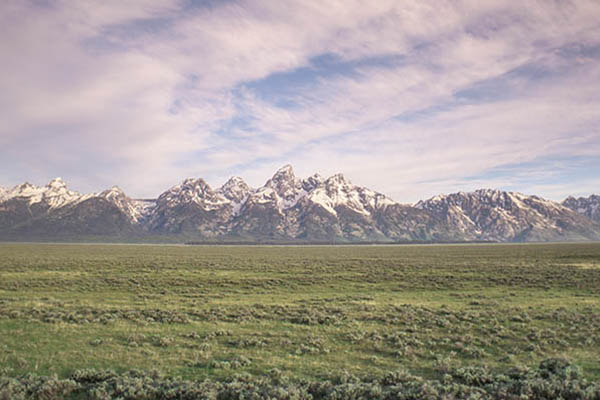
Steve Cain is a retired wildlife biologist who spent his 25-year career researching and protecting the wild species of Grand Teton National Park. In his seasonal column, Field Notes, Steve shares his insight on the Greater Yellowstone Ecosystem’s incredible wildlife.
In Jackson Hole’s temperate landscape, where abrupt seasonal changes have profound effects on almost everything, spring is a time of renewal. Days lengthen, temperatures warm, snow and ice melt, and brown turns to green as another annual growing season begins. Every spring in the animal world, annual reproductive cycles are often timed to take advantage of the mild weather and peak in productivity, an evolutionary attempt at maximizing offspring survival. But natural selection has resulted in a number of additional reproductive strategies that help ensure species’ persistence in this relatively hostile, often unpredictable environment.
Clark’s nutcrackers, for example, breed much earlier than most birds owing to their uncanny ability to cache food and remember where it is stored for months. These noisy denizens of the high country rely heavily on whitebark pine seeds for their annual caloric intake. They harvest thousands of pine nuts from mature cones in late summer and early fall, and then stash them up to 15 miles away for use even 6 months later. This allows them to begin nesting in late winter and feed nestlings seeds from the previous year’s crop. Nutcrackers avoid competition with many birds for limited offerings in this way. They also ensure that their offspring will be fully independent by late summer when it’s time to start caching seeds for themselves. An interesting related but unusual adaptation is that male nutcrackers assist with egg incubating duties, most likely because of increased energy demands associated with keeping eggs warm in winter.

Grizzly bear sow and cub. Photo by Ryan Sheets.
Employing a different strategy to cope with the erratic nature of seasonal food resources, bears and wolverines wait until early winter before determining whether or not to have babies the next year, although they breed in spring. Their fertilized embryos do not implant – effectively suspending development – for several months, until an internal assessment of body condition reveals whether the chances for successful reproduction are good or bad. If the mother’s condition is good, the egg implants. If not, it is expelled, thereby increasing the mother’s chance of surviving the winter and living to reproduce successfully during better food years. Delayed implantation, the official term for this natural system of bet-hedging, is used by more than 100 species of mammals, including seals, bats, and marsupials.
Of course, most of Jackson Hole’s most visible moms, humans excluded, rely simply on timing to give their offspring an edge in early life. Moose and elk calving, for example, is highly synchronous so that most are born within a short period of time. Each year this timing is one that straddles the delicate balance of avoiding overly cold temperatures, maximizing development before the next winter, providing abundant nutrients for nursing mothers, and flooding the landscape with considerably more easy-to-catch juveniles than predators could possibly consume.










